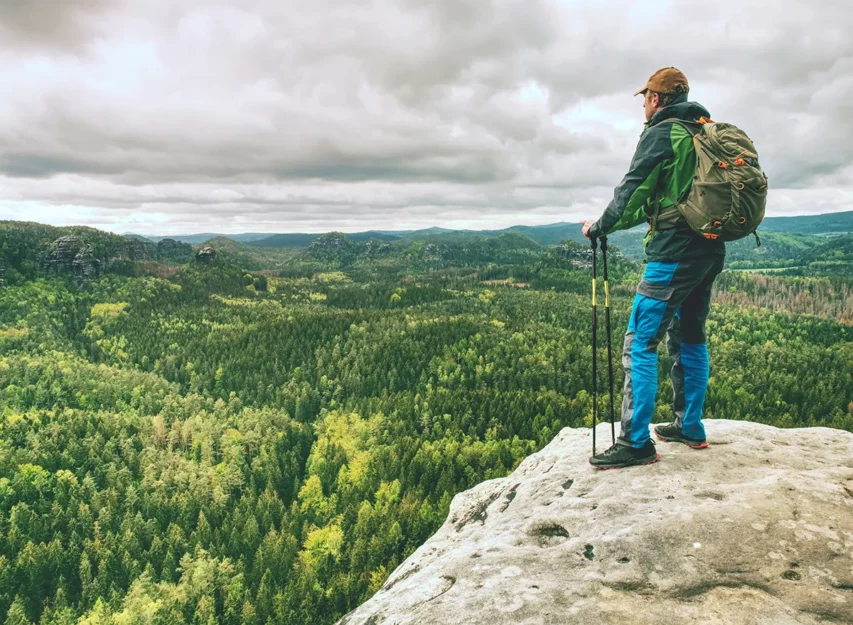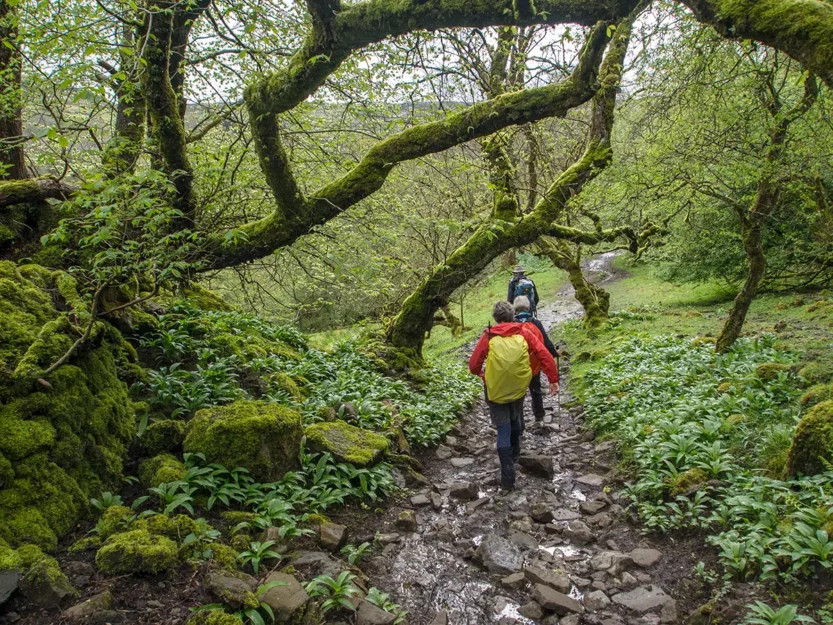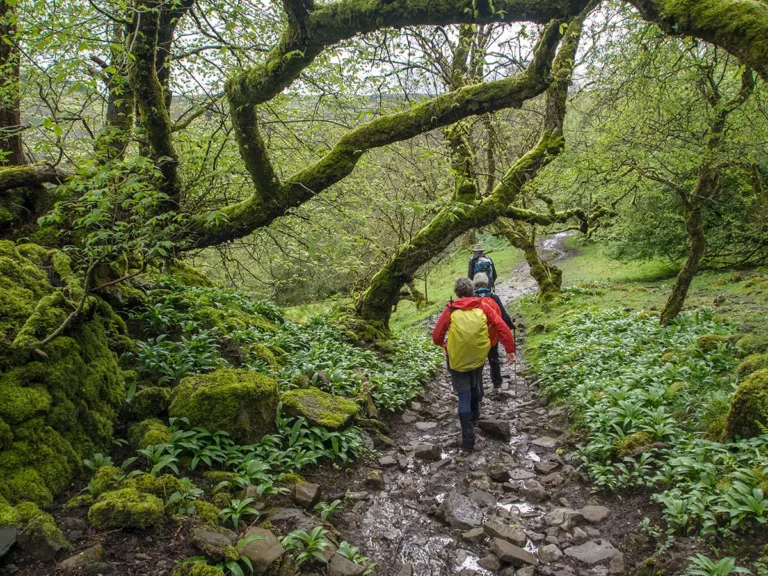The use of specialized combat boots traces as far back as the Roman Empire. Over the following two-thousand years, military boots adapted from the hobnails of the Roman Legion to modern combat boots specialized for varying climates and weather.
However, with the popularity of combat-style boots as fashion, there’s a high likelihood that the boots you’re considering wearing on a hike are black leather designed for looks, not the war-ready coyote tan synthetic boot.
Hiking in combat boots used by the military is the perfect alternative to hiking boots, but the Steve Maddens from Nordstroms won’t fare as well on rugged hiking trails.
This article examines hiking in combat boots of the fashion kind. By the end, you’ll know if your boots are up for the trail or if you should choose the next best option.
Hiking in combat boots, is your boot trail ready?
Consider this, what’s the furthest distance you’ve walked in your shoes? It’s something vital to contemplate when choosing shoes to wear on a hike. Walking around the store and a parking lot feels like a long way, but walking a mile at a moderate non-stop pace takes 15 to 20 minutes.
New hikers often underestimate how far they’ve walked in their shoes, only to end with hurting feet. You could own a pair of boots for a year and have only worn them for a few miles.
When you reach mile 2 of in on an out-and-back trail is when a blister forms, making for a miserable walk back.
What makes footwear suitable for hiking?
A hiking trail demands comfortable footwear that keeps the foot secure inside the boot and protects against rugged terrain. The sole needs to be tough enough to withstand thousands of steps across countless sharp rocks while maintaining a firm grip on large rocks and boulders.
Although leather construction is a traditional option for hiking boots, suede leather and mesh are today’s most common materials. The outer construction of hiking boots allows flexibility and breathability, while its rigid design maintains durability.

All the protection for the outside of your feet is useless without a comfortable and cushioned sole.
Hiking is brutal on the feet, muscles, and joints, which all rely on the cushioning and support of the shoe’s sole. A study measuring the effects of walking on an uneven surface showed that hip joints use 75 percent more power than walking on smooth surfaces. And the treadmill with foam the study used does not compare to the average rugged hiking trail.
The added stress from poor shoe support leaves you susceptible to leg, foot, and toe injuries.
Examining combat boots for hiking
Combat-style boots still carry some of the excellent traits of their military boot inspiration. But, with styles ranging in price from twenty to hundreds of dollars, the quality of construction is a determination you’ll need to make.
Outsoles
Most combat boots have thick rubber outsoles with grippy lugs that will keep excellent traction on dirt and rocks. At the same time, a cheap rubber will chip away on sharp rocks, ruining your shoes and lessening the grip.
Consider testing the rubber on your shoe by probing and scraping it with a rock. They shouldn’t look perfect, but any chipping means more destruction awaits on a trail.
Upper
Although not as common today, full-grain leather hiking boots still have a fanbase and make excellent hiking footwear. But the construction of leather hiking boots differs significantly from combat-style leather.
Many leather combat boots have a thin leather upper with no padding or rigidity to protect the ankle. Furthermore, the stitching lacks the reinforcement needed for the pressures of the trail — risking ankle injuries and separating the upper from the midsole.
Toe and foot protection
The inner padding of a hiking boot both insulates the foot and secures it against the inevitable shifting from a rocky trail.
When your shoe allows excess movement, navigating an uneven trail will force the toes to squish and bend inside the shoe.
Hiking in ill-fitting shoes risks several common foot injuries, including hikers toenail — unsightly and painful bleeding and bruising under the toenail — and toe numbness.
Raised heel
Mountaineering boots used for extreme expeditions, like climbing Mount Everest, feature raised heels similar to those on many combat boots. The raised heel allows climbers to dig into the terrain while descending steep mountainsides.
You likely won’t face treacherous descents, but the extra heel grip can be handy for mild, loose gravel hills.

Advice for hiking in combat boots
A thick pair of wool hiking socks can do wonders for ill-fitting boots. Hiking socks provide padding and cushion in all the right places, while wool’s natural moisture-wicking properties keep your feet dry and cool.
If your boot lacks arch support, add orthotic inserts.
The force of hiking puts excess pressure on the foot’s arch, especially when carrying extra weight in a backpack. Hiking without arch support can cause overpronation, a condition causing the arches in your feet to flatten more than normal, leading to strain on the joints throughout the feet, legs, and lower back.
Adding inserts to boots without proper support will save your feet and body from aches and pains following a long hike.
Consider cross-trainers over hiking in combat boots
If you’re in a pinch and need to find the right shoes for a hike, you might have better options in your closet.
Although not the perfect hiking shoe, cross-trainers work well for easy-to-moderate hikes since they offer comfort, flexibility, and stability to protect your feet. Since they lack a firm grip, you should not wear cross-trainers for challenging hikes.
Many think hiking footwear must stretch above the ankle in a boot style, but hiking shoes are becoming much more popular as they offer a blend of trail-running shoes and hiking boots.
I most often hike in trail runners, reserving my hiking boots for more demanding trails.
Final thoughts
New hikers frequently underestimate how strenuous a hike can be, leading to overworking and painful injuries. Always research your trails using websites like Alltrails or, if in a National Park, their respective hiking guide.
I always advise new hikers to stick to 3-mile out-and-back trails with minimal elevation change. Since an out-and-back trail stays on the same path to the end-point and back, you have intimate knowledge of the struggle ahead.
Our feet tend to be an afterthought until its injured. Only then are we constantly reminded with each painful step. If you don’t feel secure in your combat boots, don’t wear them.
Like my grandmother always told me, take care of your feet and your teeth.
Did this article help you decide for or against hiking in combat boots? Share the article on social media, and you might help save a friend or family member’s feet from a bad hike.








